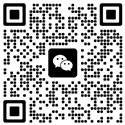外汇交易模拟分析报告(外汇交易模拟分析报告模板)
Foreign Exchange Trading Simulation Analysis Report
In the dynamic world of international finance, forex trading has emerged as one of the most lucrative and versatile investment opportunities. However, mastering this complex market requires a combination of knowledge, strategy, and practice. This report delves into the intricacies of forex trading simulation, exploring its benefits, key concepts, and practical applications. By understanding the tools and techniques involved in forex trading simulation, traders can make informed decisions, refine their strategies, and ultimately achieve long-term success.
The Importance of Forex Trading Simulation
Forex trading simulation is an invaluable tool for traders at all levels. It allows traders to practice trading in a risk-free environment, experimenting with different strategies, and testing their approaches without incurring financial risks. This is particularly beneficial for newcomers to the forex market, as it provides a safe space to learn and develop their skills. Additionally, forex trading simulation enables traders to analyze market trends, understand price movements, and improve their technical analysis abilities.
One of the primary advantages of forex trading simulation is its ability to provide traders with real-time market data. This allows traders to simulate the experience of trading in a live market, including the effects of news announcements, economic data releases, and geopolitical events. By incorporating these factors into their simulations, traders can better anticipate market movements and adjust their strategies accordingly.
Key Concepts in Forex Trading Simulation
Forex trading simulation revolves around several core concepts, including market analysis, technical indicators, and trading strategies. Understanding these concepts is essential for traders to make informed decisions and achieve consistent results.
1. Market Analysis
Market analysis is a cornerstone of forex trading simulation. Traders use various tools and techniques to analyze market trends and identify potential trading opportunities. This includes studying price charts, identifying support and resistance levels, and analyzing news events that may impact market sentiment. By conducting thorough market analysis, traders can gain insights into potential price movements and make strategic decisions.
2. Technical Indicators
Technical indicators are mathematical tools used to analyze market data and identify potential trading signals. Common indicators include moving averages, relative strength index (RSI), and Bollinger Bands. These indicators help traders identify overbought or oversold conditions, trend reversals, and potential breakouts. Incorporating technical indicators into forex trading simulation allows traders to make more informed decisions and improve their trading strategies.
3. Trading Strategies

Forex trading simulation enables traders to experiment with different trading strategies, such as trend following, range trading, and scalping. Trend following strategies involve identifying and capitalizing on long-term market trends, while range trading focuses on exploiting price fluctuations within a defined range. Scalping, on the other hand, involves making small, frequent trades to capture minor price movements. By testing and refining these strategies in a simulated environment, traders can optimize their approaches and improve their profitability.
Practical Applications of Forex Trading Simulation
Forex trading simulation offers numerous practical applications for traders, from developing trading strategies to managing risk. Here are some of the key ways forex trading simulation can be utilized:
1. Strategy Development
One of the most significant benefits of forex trading simulation is its ability to help traders develop and refine their trading strategies. By simulating various market conditions and scenarios, traders can test the effectiveness of their strategies and make necessary adjustments. This iterative process allows traders to identify weaknesses and improve their overall approach.
2. Risk Management
Forex trading simulation is an excellent tool for managing risk. Traders can experiment with different stop-loss and take-profit levels, assess the potential risks and rewards of various trades, and develop strategies that align with their risk tolerance. This helps traders make informed decisions and minimize the impact of market volatility on their trading results.
3. Educational Purposes
For traders who are new to the forex market, forex trading simulation serves as an invaluable educational tool. It provides a safe and controlled environment for learning about the market, developing technical skills, and gaining experience. By practicing in a simulated environment, newcomers can build confidence and gradually transition to live trading.
Conclusion
Forex trading simulation is a powerful tool that empowers traders to make informed decisions, refine their strategies, and achieve long-term success. By understanding the key concepts, utilizing technical indicators, and experimenting with different trading strategies, traders can optimize their approach and maximize their profitability. Additionally, forex trading simulation offers practical applications for strategy development, risk management, and educational purposes, making it an essential component of any trader's toolkit. As the forex market continues to evolve, the importance of forex trading simulation will only grow, providing traders with the resources they need to thrive in this dynamic and competitive environment.
本文来源:外汇网站责任编辑:
【温馨提示】转载请注明原文出处。 此文观点与零零财经网无关,且不构成任何投资建议仅供参考,请理性阅读,版权归属于原作者,如无意侵犯媒体或个人知识产权,请联系我们,本站将在第一时间处理。零零财经对文中陈述、观点判断保持中立,不对所包含内容的准确性、可靠性或完整性提供任何明示或暗示的保证,请读者仅作参考,并请自行核实相关内容。











客户对我们的评价
股票证券交易来自福州的客户分享评论:
股票外汇来自苏州的客户分享评论:
外汇新手投资 来自苏州的客户分享评论: